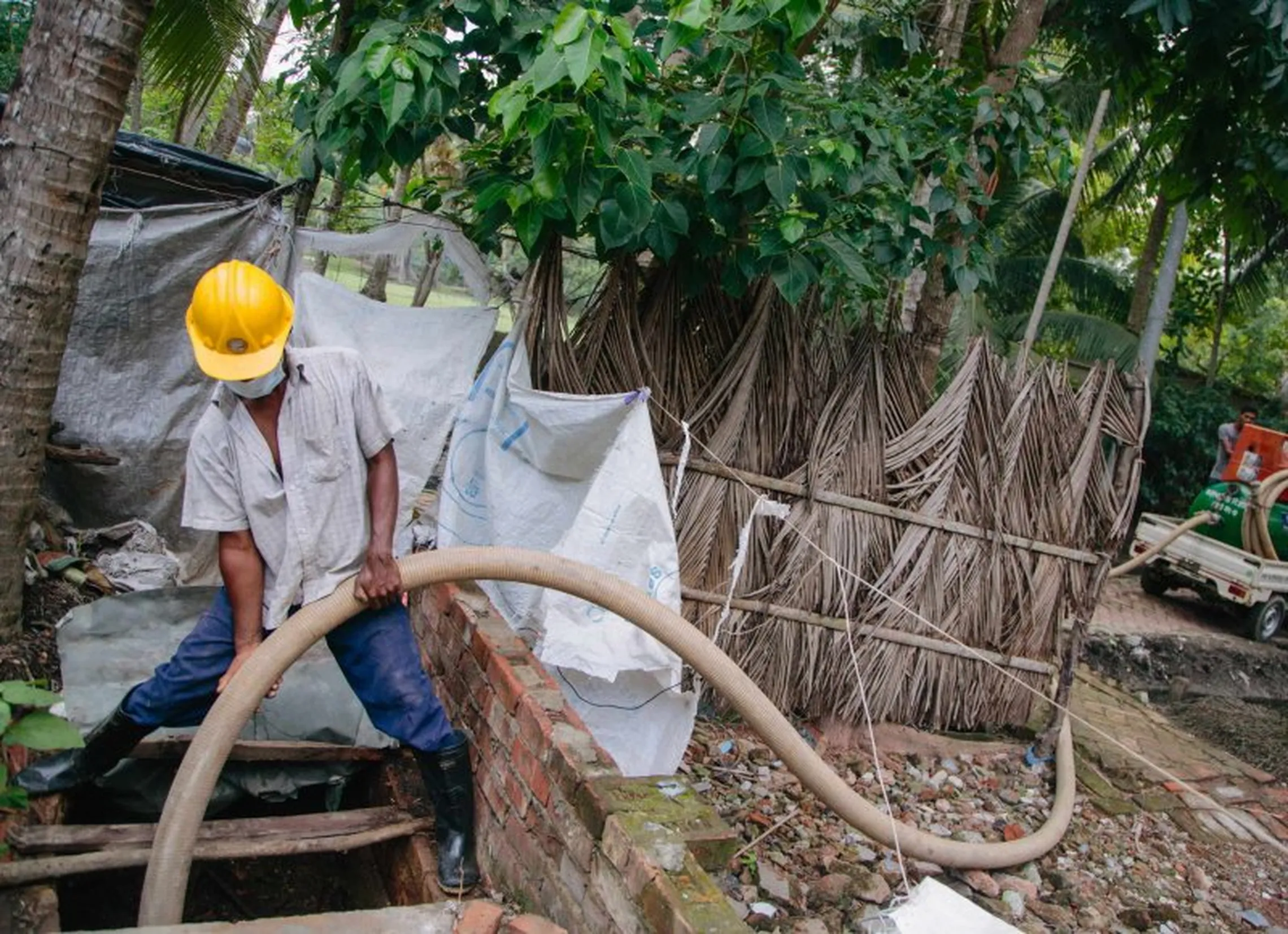Making a living should not have to cost someone’s life

If something is happening repeatedly, can we still call it an accident?
“Soon after one of the men stepped into the septic tank, he fell unconscious. Another worker entered to check on him, but he too fainted. Afterwards_, three others entered one by one, but they all fainted”._
“I was helping my husband pull the bucket up but suddenly the rope snapped. He became unconscious, was hurt badly” (Ms Jhorna Das, sanitation worker in Khulna).
These men are among hundreds of thousands of sanitation workers engaged in a job known as “manual scavenging/ manual emptying”, i.e., emptying dry toilets by hand, or cleaning septic tanks and sewers without any protection. We’ve read about these ‘incidents’ countless times, but many more go unreported. Due to its prevalence, should we stay quiet and consider this "just another accident"?
An accident is an unpredictable event, difficult if not impossible to prevent. But entering a septic tank to clean it, and to lose one’s life is still considered an accident.
Protecting our emptiers’ health and dignity: it is an issue
Household sanitation in urban areas is predominantly based on on-site technologies, e.g., septic tanks and pits, which require regular emptying. Majority of these are emptied manually; very few are emptied mechanically. SNV’s 2018 WASH SDG Programme baseline data in 16 cities across five countries (Bangladesh, Indonesia, Nepal, Tanzania and Zambia), show that only 13% of the households surveyed have emptied their containments: of this group 62% emptied their pit/ septic tank using manual emptying services, 8% employed combined methods (mechanical and manual), and only 23% engaged exclusively in mechanical emptying services.
Service options vary in countries. For example, in Bangladesh and Nepal, manual emptying is predominant, but mechanical emptying is well practised in Indonesia and Tanzania. More recently, in many 'WASH SDG Programme' cities, an incipient emptying service has been set-up, but it is not without risks if basic health and safety standards are not maintained. In 15% of the cases, emptiers enter the pit without proper personal protective equipment (PPE). It goes without saying that the working processes involved in manual operations expose emptiers to hazardous working conditions.
Despite having some awareness of the dangers associated with the job, the bulk of emptiers work without PPE, such as gloves, masks or boots, and they do not take safety precautions while emptying tanks/pits. Most emptiers work during the night to avoid complaints from neighbours, while many drink locally produced alcohol while working – two factors which may heighten the chances of injury and accidents. The biggest risks, however, are associated with manual emptying methods, especially when people enter the pit. A culture of safety around emptying and transport of faecal sludge is lacking, probably because they don’t care, or because they don’t know what could be done differently.
Beyond the health risks posed by unsafe emptying to emptiers, the job itself is shrouded in social stigma. Manual emptiers face logistical challenges to sludge disposal in safe locations, i.e., a suitable distance away from residential areas. Step into the shoes of a manual emptier. Read, 'City Cleaners: Stories of those left behind'****.'

Protecting our emptiers’ health and dignity: it starts with awareness
As the urban population increases, there is a need for more efficient and effective faecal sludge services. These can only be carried out if current services are better organised, the occupational health of service providers are guaranteed, and safety measures are taken.
Although occupational health and safety (OHS) is a key indicator in the maintenance of labour standards and labour acts, the health and safety of sanitation workers involved are largely ignored. Water and sanitation interventions focus on the human rights of WASH consumers, but fail to address those of the workers.
Different interventions are required, with different stakeholders, to minimise/ eliminate associated risks. A start, however, is to acknowledge that this is an issue. Increased awareness – at all levels – about the importance, practical conditions, and protocols for safe sanitation work, followed by smart enforcement, including inspection on compliances with appropriate incentive and punishments mechanisms, are some ways forward.
The threats of fatal accidents, injuries and work-related diseases for sanitation workers are extremely high. These require urgent attention to minimise safety and health risks towards the workers, and their families who lack financial and social safeguards. Yet, most emptiers consider their work as handed down to them by fate; the job is learnt from their parents and other elders. To some emptiers, safety protocols as cumbersome and/ or they find the use of PPE hot and uncomfortable. Engaging with sanitation workers to find new measures – both practical and safe –requires an innovative approach adapted to their local situation, which also considers their social issues.
It is this commitment that’s required from everyone – government, city authorities, development partners, service recipients, and emptiers themselves – to truly achieve safely managed sanitation for all.
How many deaths are too many deaths? How many more cases must we hear of before we put our foot down and say ‘This is enough’?
Spread the word and let’s work together to ensure safe working environment for emptiers.
Attending AfricaSan5 and FSM5 in Cape Town? On Tuesday 19 February 2019 (14:30-16:00) at Meeting Room 2.4.1, catch Rajeev Munankami and Sam Husain share the success story of Khulna City in Bangladesh during the session titled, 'Industry and Exhibition Track: Container-based Systems and Capacity Building'.
About the Author: Rajeev Munankami leads SNV Bangladesh’s Urban Sanitation Programme and has been with SNV since 2009. He has over 15 years of professional experience in managing action oriented and evidence-based development programmes and has led multi-stakeholder sector development approaches for both government agencies and I/NGOs.
Photos: [banner] Mh Tri/Unsplash | [in text] Aidan Dockery for SNV.